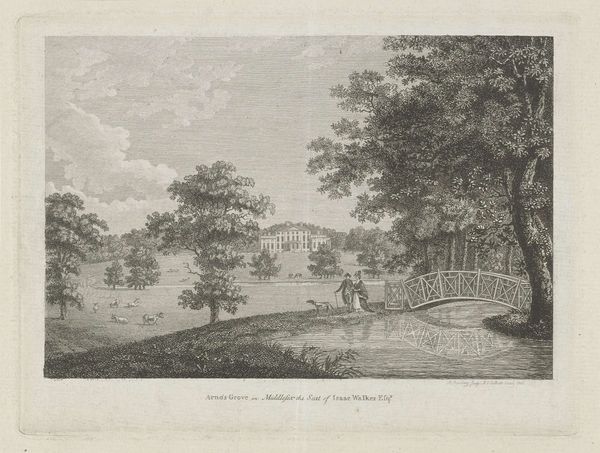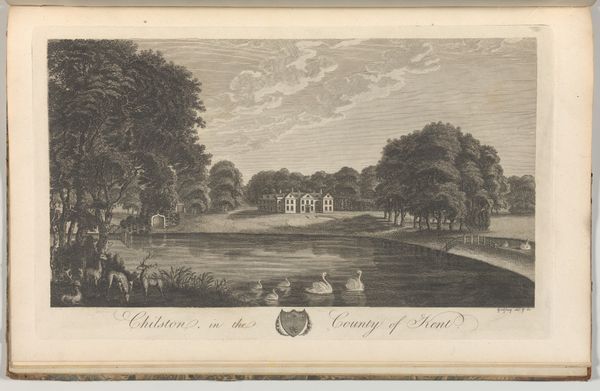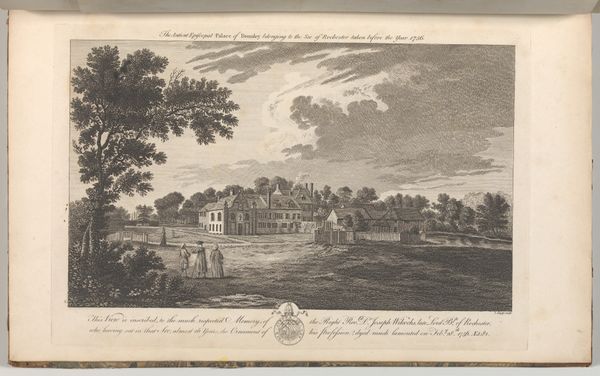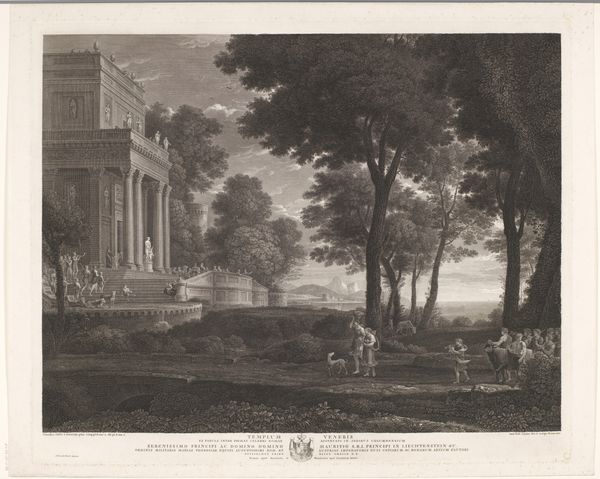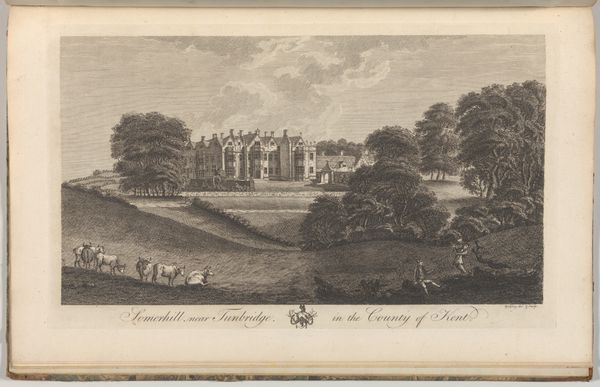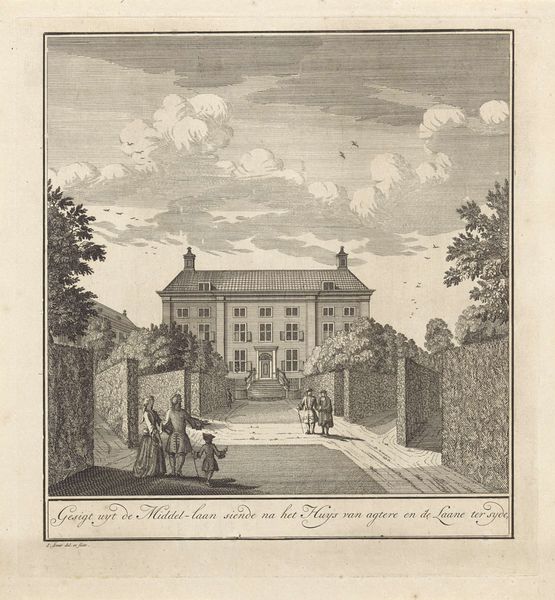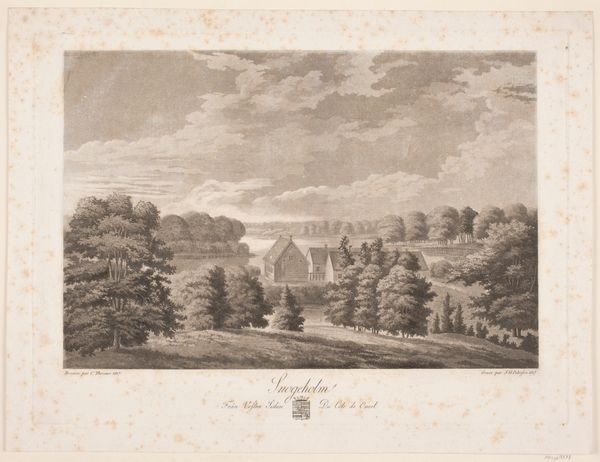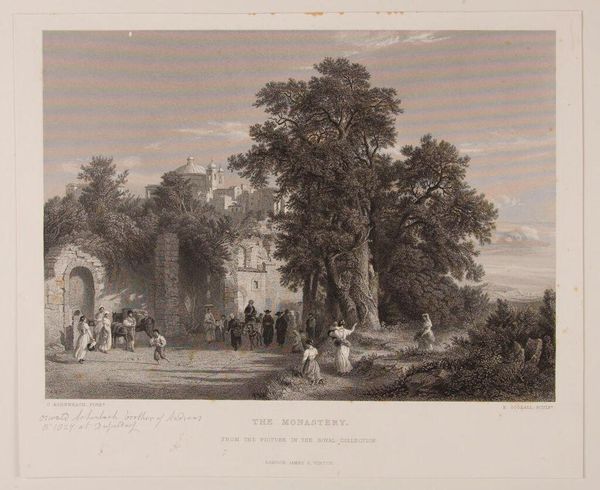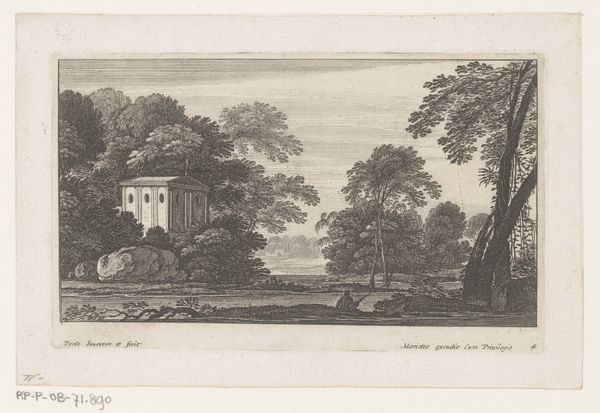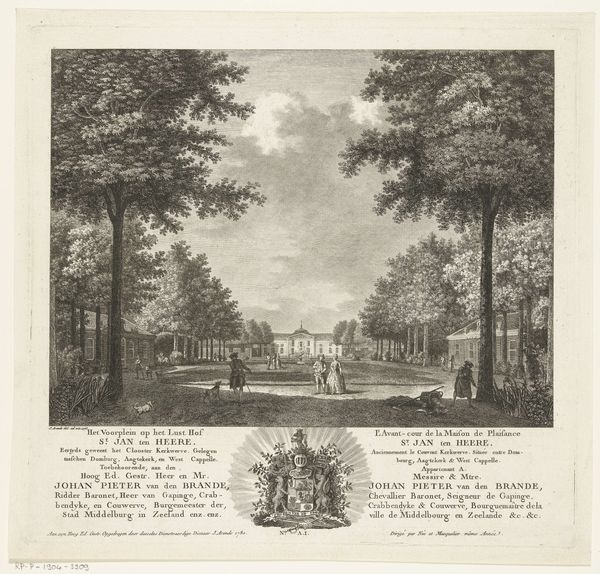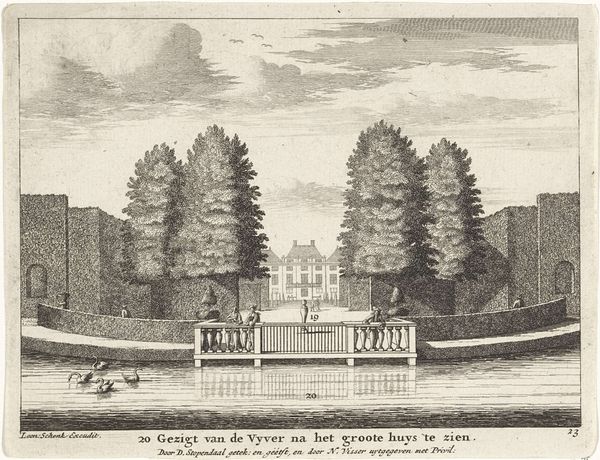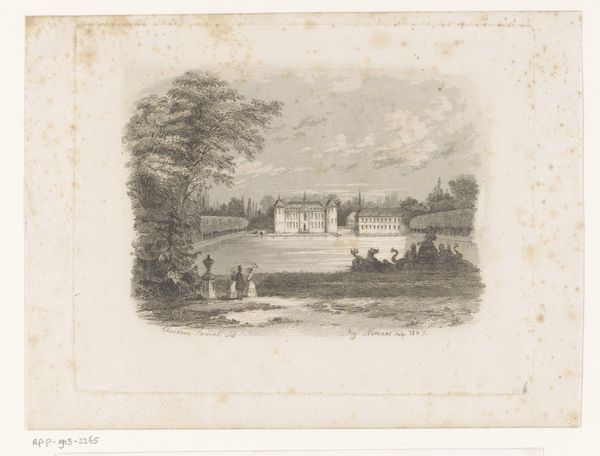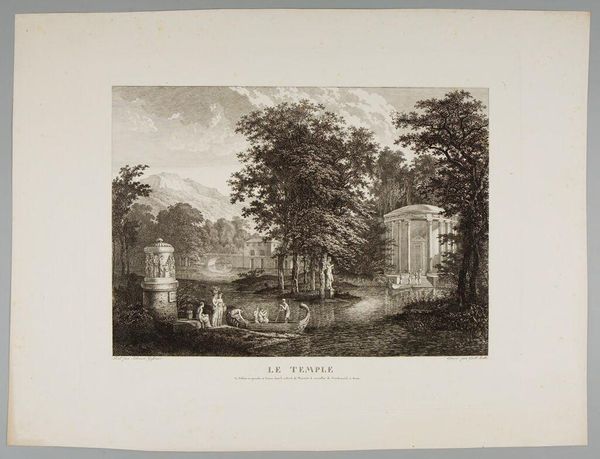
View of Friern House, the Seat of John Bacon, engraved by W. Knight Possibly 1797
0:00
0:00
Copyright: CC-BY-NC-ND 4.0 DEED, Photo: Tate
Editor: This is "View of Friern House, the Seat of John Bacon," an engraving by Edward Dayes. The scene feels very staged and idyllic, like a glimpse into a very specific social stratum. What social dynamics do you see at play here? Curator: I see a carefully constructed representation of power and privilege. The landed gentry, literally framed by their estate, reinforces a visual narrative of ownership and control. How might this image normalize or even celebrate social inequality of the time? Editor: It's interesting how the composition draws the eye to the house, but also to the figures in the foreground. Are they part of the display, so to speak? Curator: Precisely! Consider how gender and class are performed here. The women, perhaps, symbolize the domesticity and refinement associated with the estate, while the man embodies authority. Is this a tableau vivant of 18th-century social expectations? Editor: So, it's not just a pretty picture, but a reflection of the era's values? Curator: Absolutely. By examining these visual cues, we can unpack the complex power structures embedded within seemingly simple landscapes. It's a reminder that art is rarely neutral. Editor: I’ll definitely look at these landscapes differently now.
